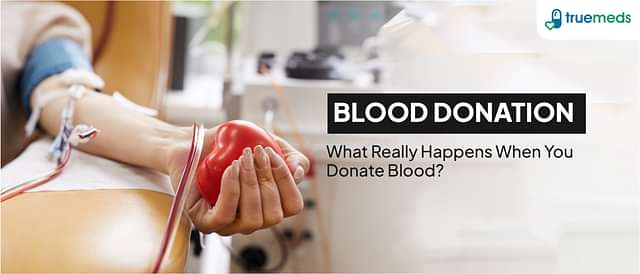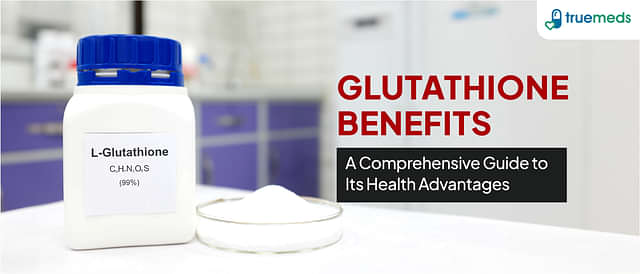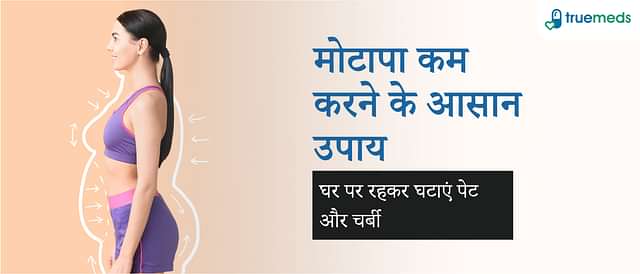Deep vein thrombosis: who is at risk?
Last updated on : 21 Mar, 2024
Read time : 10 min
What is deep vein thrombosis?
Deep vein thrombosis is a blood clot that forms in the lower legs. However, they can also happen in the arm, thigh, or pelvis. DVT is something that everyone should be aware of because it can result in significant disease, disability, and, in very extreme situations, death. The good news is that DVT can be treated and prevented if diagnosed early.
What causes deep vein thrombosis?
Deep vein thrombosis causes include the following:
I. Cancer
People with cancer or another medical condition that causes the body to become weak are at an increased risk for DVT. A few cancers, like pancreatic cancer, stomach cancer, brain cancer, lung cancer, uterine cancer, ovarian cancer, and kidney cancer, are considered risk factors for DVT. An additional risk factor is the development of certain blood cancers like lymphoma and myeloma.
II. Surgery
If you have a major operation, such as a hip replacement, then there’s a chance that you could develop DVT. We do know that some types of surgery can increase your chances of developing this condition—for example, surgery involving the lower body may be linked with an increased risk. Other surgical procedures may also lead to DVT in some people.
III. Pregnancy and pregnancy hormones
When pregnant women are physically active or move around suddenly after giving birth, their blood pressure rises faster than usual due to hormonal changes during pregnancy. This increase in blood flow can cause clotting problems like DVT if there isn’t enough oxygen circulating throughout our veins. The most common problem caused by these conditions is pulmonary embolism, which usually happens within three days after the delivery when the blood flow to the baby stops going through the placental tissue outside the uterus’s walls.
The risk of blood clots may also increase if you undergo treatment for certain cancers, which includes hospitalisation, surgery, chemotherapy, hormone therapy, and catheters (small tubes inserted into veins to deliver medications).
Read more – Foods to eat during chemotherapy
Signs and symptoms of deep vein thrombosis

Deep vein thrombosis symptoms include:
- Swelling on one side of your leg, ankle, or foot
- Cramping pain, which typically starts in the calf, in the affected leg
- a region of skin that seems warmer than the skin around it and intense, unexplained pain in your foot and ankle.
- Depending on skin tone, the skin over the affected area becomes pale, reddish, or bluish.
A blood clot in the arm or leg may separate and move to the lungs. This condition, known as a pulmonary embolism (PE), can be fatal. PE symptoms and signs include.
- Breathing challenges
- Chest ache that gets worse when you cough or take a big breath
- a bloody cough, an abnormally fast heartbeat, or both
What factors increase the risk of deep vein thrombosis?
If you have certain medical conditions that alter how your blood flows through your veins, you are more likely to develop clots.
These are:
- Having DVT in one’s family, getting a vein catheterised, using birth control, receiving hormone therapy, or smoking are all risk factors for DVT. Other factors include being overweight or obese, which increases pressure on the veins in the legs and pelvis.
- It’s especially important if you have at least one major risk factor for staying still for a long time while driving or flying.
How is deep vein thrombosis diagnosed?
Deep vein thrombosis and pulmonary embolism can only be diagnosed with tests that only a doctor can do. You must get medical attention if you suffer from DVT or PE symptoms.
For the detection of DVT
- Duplex ultrasonography is an imaging procedure that uses sound waves to examine the veins’ blood flow. In the deep veins, it can find obstructions or blood clots. It is the typical imaging procedure used to identify DVT.
- A D-dimer blood test examines a chemical released into the blood when a clot dissolves. If the D-dimer test is negative, the patient most likely does not have a blood clot.
- Contrast Venography: A large vein in the foot or ankle is checked in contrast venography, a specific kind of X-ray that allows the physician to see the deep veins in the leg and hip by injecting contrast material (dye) into them. It is the most reliable test for blood clot diagnosis; however, it’s an intrusive treatment, meaning it calls for medical professionals to use tools to enter the body to do the test. Because of this, duplex ultrasonography has mostly replaced this test, and only a few patients still have to go through it.
- A computed tomography (CT) scan and magnetic resonance imaging (MRI), both of which produce images of the body using radio waves and magnetic fields, are imaging procedures that aid medical professionals in the detection and treatment of a variety of medical conditions. Although these tests can show veins and clots in pictures, they are not frequently used to identify DVT.
For the diagnosis of pulmonary embolism
CTPA: An injection of contrast material (dye) into a vein is part of a special X-ray test called computed tomographic pulmonary angiography (CTPA). Images of the lungs’ blood vessels can be obtained using this examination. The usual imaging procedure to identify PE is this one.
The ventilation-perfusion (V/Q) scan is a specific test that employs a radioactive substance to reveal the areas of the lungs that are receiving oxygen and receiving blood flow, respectively, to determine whether there are any areas of the lungs with variations in ventilation and perfusion. For instance, the V/Q scan may reveal normal oxygen levels but reduced blood flow to the areas of the lungs serviced by the occluded blood vessels if there are clots in some of the blood arteries in the lungs. This test is used when CTPA isn’t available or when doing the CPTA test would be dangerous for the patient.
Pulmonary angiography: To do a pulmonary angiography, a special kind of X-ray exam, a large catheter (a long, thin hollow tube) must be inserted into a major vein, typically in the groyne, and into the arteries within the lung. Next, contrast material (dye) must be injected into the catheter. The most accurate test to identify PE shows pictures of the blood vessels in the lung. However, because it is an intrusive test, only specific patients can undergo it.
Magnetic resonance imaging (MRI) uses radio waves and a magnetic field to obtain images of the lungs. But this test is usually only done on a small group of people, like pregnant women or people for whom using contrast material could be dangerous.
How do you prevent deep vein thrombosis?
Prevention of deep vein thrombosis includes the following:
- Avoid smoking since it can cause a blood clot in the leg veins.
- Exercise regularly and maintain a healthy weight.
- Avoid prolonged periods of standing or sitting, as this puts pressure on the legs and increases your risk of DVT. If you sit for a long period at work or home, use an air travel pillow to minimise pressure on the legs while you are doing so (see below).
- Wear graduated compression stockings to bed at night. If you overexercise or engage in another activity, this will help reduce swelling in your legs while you sleep and afterwards.
- Use an air travel pillow if you are travelling by plane or train. They’ll keep both of your heads comfortably resting against something soft yet supportive during flights so that no matter how much turbulence it is in-flight, neither one nor both ends will get hurt because neither end has fallen asleep due to a lack of support provided by things like pillows, seats, blankets, sheets, and so on.
- If you’re a woman and your doctor has advised you to use birth control because your family has a history of venous thromboembolism (VTE), then follow their advice.
What is the treatment for deep vein thrombosis?
Deep vein thrombosis treatment includes the following:
1. Anticoagulant therapy
The drugs most frequently prescribed to treat DVT or PE are anticoagulants, also known as “blood thinners.” Despite being referred to as “blood thinners,” these drugs do not thin the blood. They reduce the blood’s ability to clot, which makes it less likely that more clots will form and keeps the clot from getting bigger as the body slowly absorbs it.
The most commonly used injectables are:
- Unfractionated heparin, which is injected into a vein,
- Low molecular weight heparin (LMWH), injected beneath the skin
- Fondaparinux is one of the three most commonly used anticoagulants that are injected under the skin.
Orally administered anticoagulants include
- Warfarin
- Dabigatran
- Rivaroxaban
- Apixaban
- Edoxaban.
All anticoagulants can cause bleeding, so people who take them must be carefully watched to ensure they don’t bleed in strange ways.
2. Thrombolytics therapy
Thrombolytics, sometimes known as “clot busters,” function by dissolving the clot. They are saved for severe cases since they have a larger risk of causing bleeding than anticoagulants.
3. Inferior vena cava filter
When anticoagulants are ineffective or cannot be used, a filter can be put into the inferior vena cava, a primary vein that returns blood to the heart, to stop an embolus from travelling through the vein and reaching the lungs.
4. Thrombectomy/Embolectomy
It may occasionally be necessary to do surgery to remove the clot. The goal of thrombectomy is to remove the clot from a DVT patient. In a PE patient, an embolectomy removes the lung blockage brought on by the clot.
Conclusion
DVT is a potentially life-threatening condition with numerous risk factors. Prevention is important and can be either mechanical or pharmacological. The primary treatment modality is anticoagulant therapy. You can get both brand-name and generic drugs by uploading your prescription to the Truemeds app. When you order medicines online, you can save money by choosing an alternative or generic medicine recommended by Truemed’s doctors. You can save up to 72% on your purchase and get free home delivery across India.
Disclaimer: This information shouldn’t be used to diagnose or treat a medical condition, nor should it be used in a medical emergency. A qualified medical professional should be consulted to diagnose and treat all medical conditions.
FAQs
You should keep taking your blood thinners as prescribed and wearing your compression stockings until your doctor tells you to stop. A DVT can take many months or even a year to dissipate. You might need blood tests to make sure that the blood thinners you are taking are in the right amount. Your doctor may perform ultrasounds to see if your blood clot is getting better, moving, or staying in the same place.
Disclaimer
Our healthcare experts have carefully reviewed and compiled the information presented here to ensure accuracy and trustworthiness. It is important to note that this information serves as a general overview of the topic and is for informational purposes only. It is not intended to diagnose, prevent, or cure any health problem. This page does not establish a doctor-patient relationship, nor does it replace the advice or consultation of a registered medical practitioner. We recommend seeking guidance from your registered medical practitioner for any questions or concerns regarding your medical condition.
Popular Articles
Recommended Articles
Recent Articles
Top-Selling Medicines:
...View more
Top-Selling OTC:
...View more
Company
About UsHealth ArticleHealth StoriesDiseases & Health ConditionsAll MedicinesAll BrandsNeed HelpFAQSubscribe
Registered Office Address
Grievance Officer
Download Truemeds

Contact Us
Our customer representative team is available 7 days a week from 9 am - 9 pm.
v3.7.8
Our Payment Partners



























































